Why you can trust Tom's Hardware
To learn about our HDR testing, see our breakdown of how we test PC monitors.
The G27QC automatically switches over when an HDR10 signal is detected. It applies the proper luminance curve and locks out all image controls except for brightness. Adaptive sync and 165Hz remain in play. There is no dynamic contrast option available, but Gigabyte’s high-contrast VA screen does a reasonable job with HDR content.
HDR Brightness and Contrast
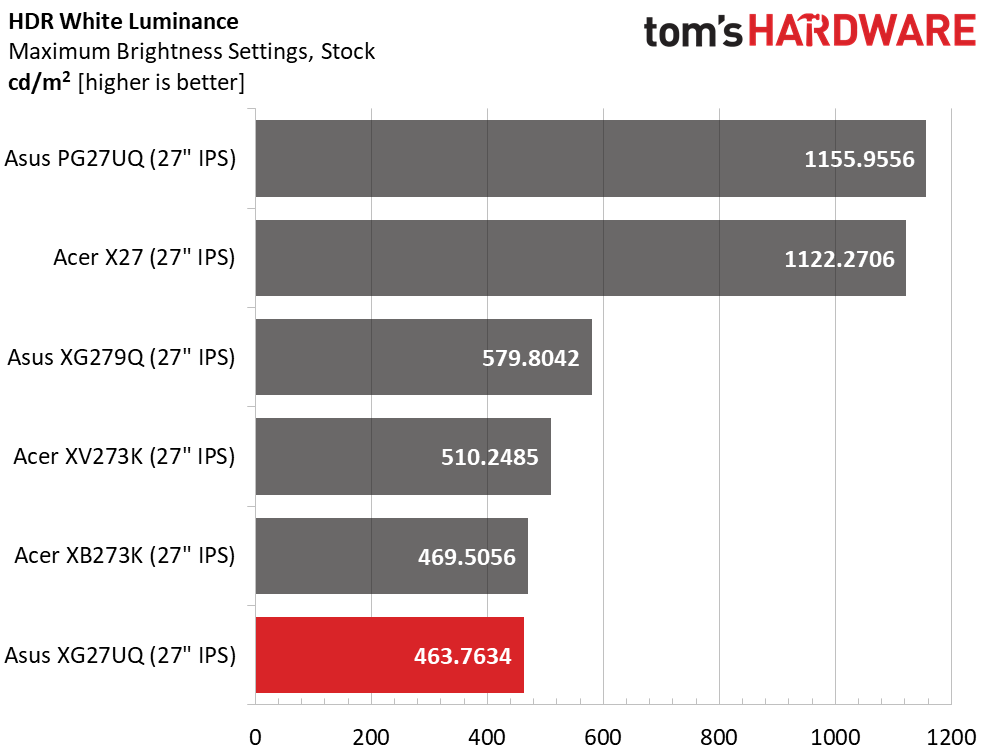
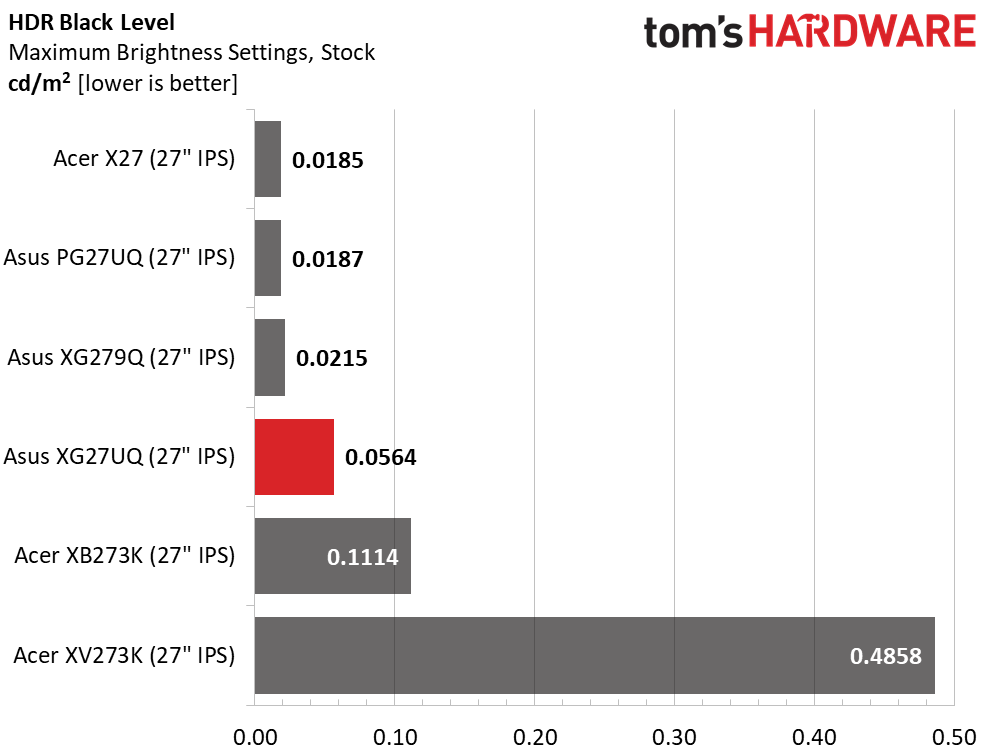
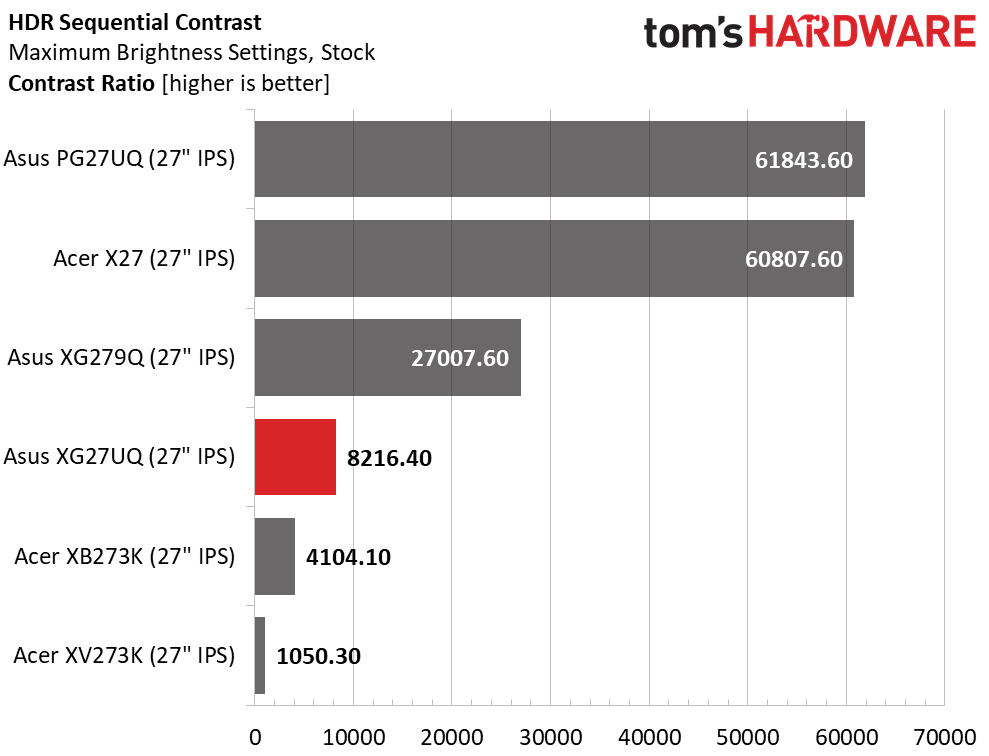
Maximum output in HDR mode is a tad higher than SDR, just over 333 nits. In our comparison group, that puts the G27QC at the bottom. The Cooler Master is blank because it doesn’t have HDR. The top four screens exceed the VESA DisplayHDR 400 standard. The G27QC is saved by its very-low black levels. It’s the best of the screens that lack dynamic contrast. The Asus and ViewSonic panels manipulate their backlights on a frame-by-frame basis to provide the widest possible dynamic range. That is apparent in the third chart with the contrast results. Though the G27QC is respectable among value-oriented monitors, it pales in comparison with the top two screens. Overall though, HDR looks OK with a little more impact than SDR due to accurate rendering of the EOTF luminance curve.
Grayscale, EOTF and Color
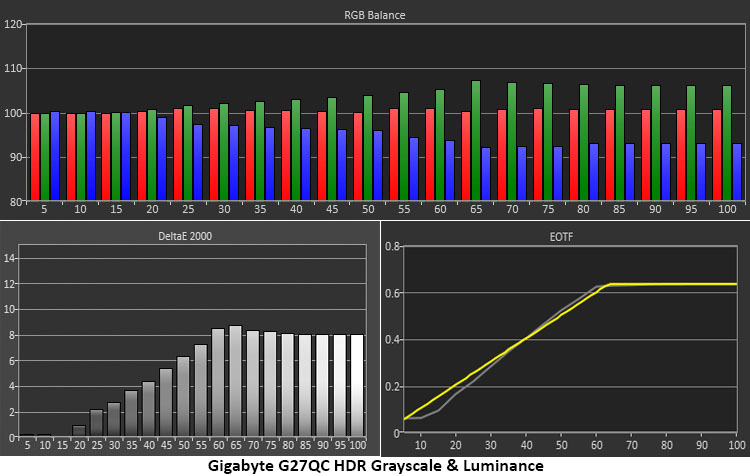
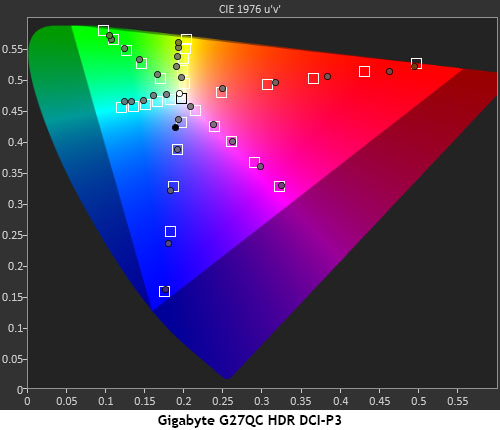
Our HDR grayscale test shows a visible green tint in the G27QC’s result. It’s unfortunate that the RGB sliders aren’t available. You can adjust brightness if you wish though we recommend maxing it for the best possible HDR image. The EOTF chart looks good with a slightly-too dark rendering in the lowest steps. The tone-mapping transition point is above 60% which is solid performance.
Considering the gamut chart, we can see a little over-saturation in red and blue, but most targets are fairly close to the mark. Green tracks well until it runs out at around 90%. Hue values are accurate which makes overall HDR color quality quite good.
MORE: Best Gaming Monitors
MORE: How We Test Monitors
Get Tom's Hardware's best news and in-depth reviews, straight to your inbox.
MORE: All Monitor Content
Current page: HDR Performance
Prev Page Grayscale, Gamma and Color Next Page Viewing Angles, Uniformity, Response and Lag
Christian Eberle is a Contributing Editor for Tom's Hardware US. He's a veteran reviewer of A/V equipment, specializing in monitors. Christian began his obsession with tech when he built his first PC in 1991, a 286 running DOS 3.0 at a blazing 12MHz. In 2006, he undertook training from the Imaging Science Foundation in video calibration and testing and thus started a passion for precise imaging that persists to this day. He is also a professional musician with a degree from the New England Conservatory as a classical bassoonist which he used to good effect as a performer with the West Point Army Band from 1987 to 2013. He enjoys watching movies and listening to high-end audio in his custom-built home theater and can be seen riding trails near his home on a race-ready ICE VTX recumbent trike. Christian enjoys the endless summer in Florida where he lives with his wife and Chihuahua and plays with orchestras around the state.
-
maestro0428 This is right up my alley. Ive been looking for a larger monitor to game on. And it's actually a good value. Wish it was flat though as the curve is just a marketing gimmick if you ask me. Do they have a flat version?Reply -
Selcuk Estel Replymaestro0428 said:This is right up my alley. Ive been looking for a larger monitor to game on. And it's actually a good value. Wish it was flat though as the curve is just a marketing gimmick if you ask me. Do they have a flat version?
Yes there's a flat one of the same model aptly named G27Q without the C at the end. (C=curve) -
QSV I will never understand how tech sites can recommend any VA monitors for gaming with their huge issues like black smearing and certain flickering textures.Reply -
veldrane2 cons:Reply
27"
2k
VA for gaming ...
27" - been on it for about a decade now, its time to move up
2k - not even a wide 2k, just 2k, in light of the new GPUs and upcoming CPUs, seriously ?
VA - VA for gaming is hit and miss at best, usually its the miss despite marketing claims.
Curved - preger flat,though this isn't necessarily a con as some people might prefer curved so I did not list it as such.